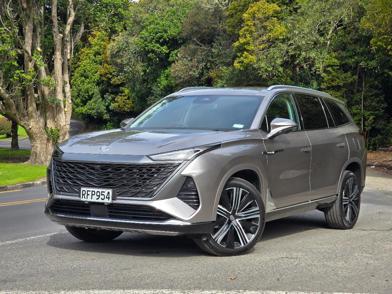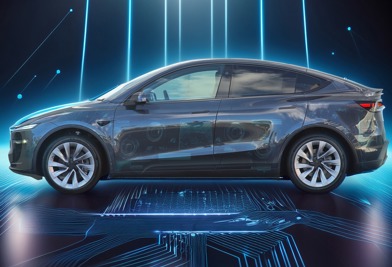The Nissan Ariya is an under-the-radar car in New Zealand, partly because it had a very, shall we say, “erratic” launch sequence.
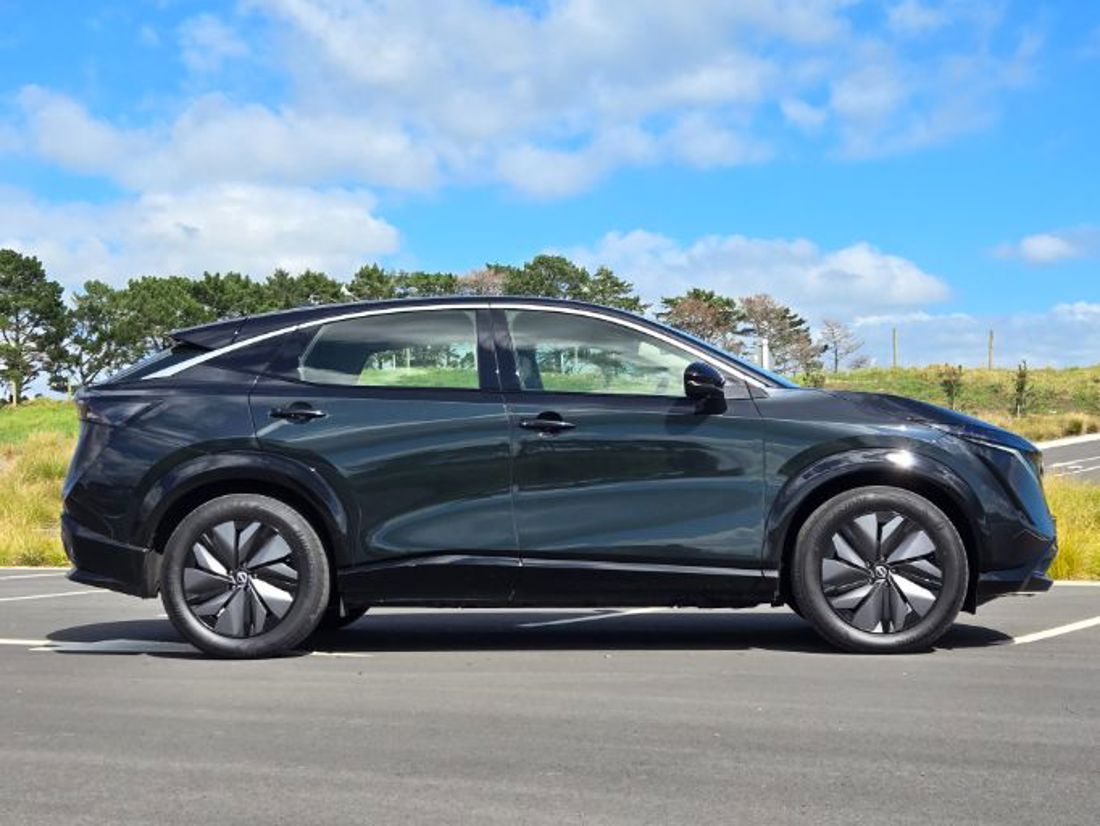
It was confirmed for the market in 2023 when the Clean Car Discount was the ticket to big EV sales, but didn’t quite arrive (although we drove an overseas-specification preview example here in NZ, in February 2024).
Ariya was put on hold indefinitely in mid-2024 by Nissan NZ, as demand for plug-in vehicles collapsed. But then in November, the company surprised everybody by releasing it after all, in three different versions.
So this is our first review of a proper Kiwi-spec Ariya. For context, there are a few things you should know. Nissan claims Ariya is still the first pure-electric SUV designed and built in Japan; a pioneer. It’s a relatively mature car now, signed off in 2020 but delayed in many global markets until 2022, due to Covid/chip shortages.
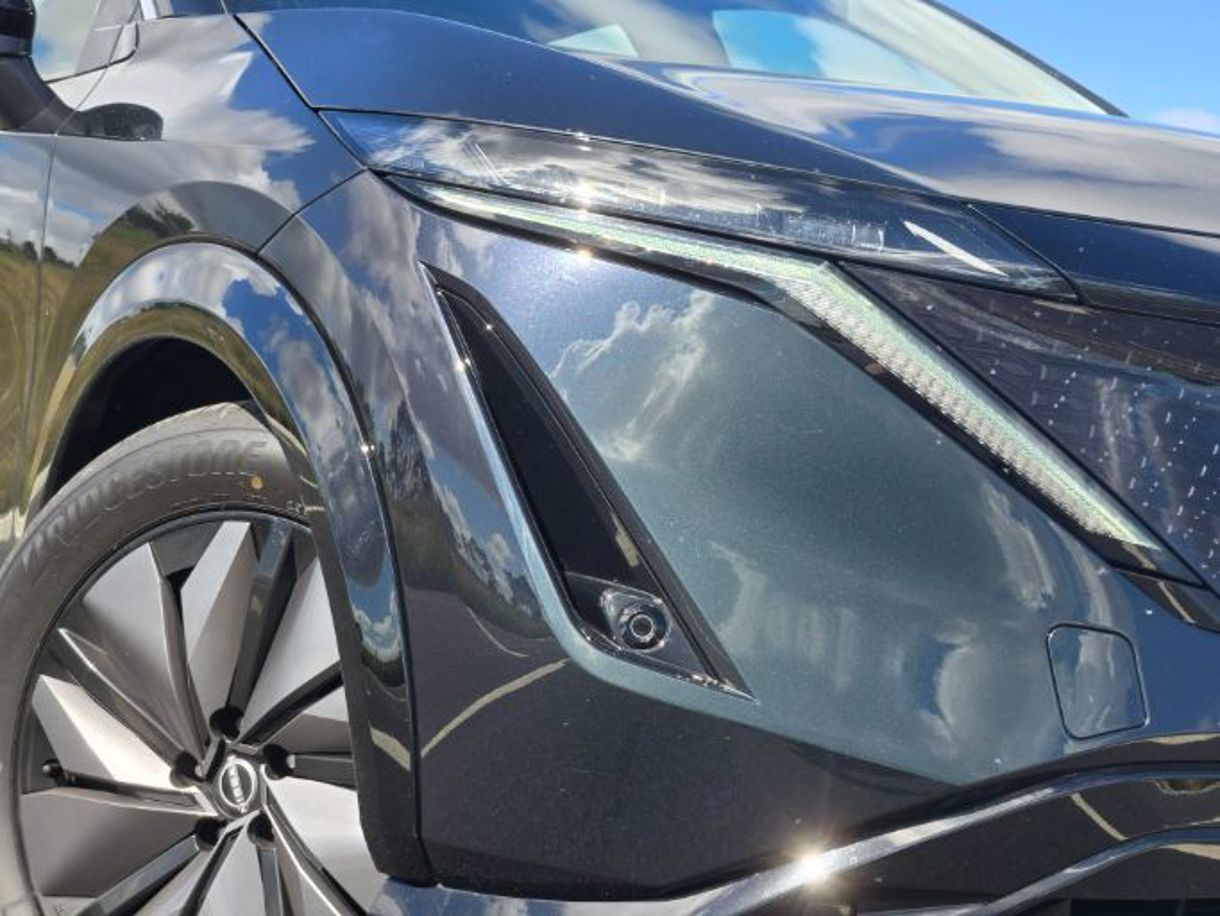
So in a 2025 context, Ariya is unlikely to wow you with advanced EV technology and extreme abilities. But wind back the clock and think about the future we used to imagine with electric vehicles (you know, before we had… electric vehicles): they were going to be exquisitely designed, futuristic-feeling and waft us around in utter silence.
Nissan claims Ariya is still the first pure-electric SUV designed and built in Japan; a pioneer. But it’s a relatively mature car now.
You could make an argument that Ariya is pretty close to that transport-future we were promised.
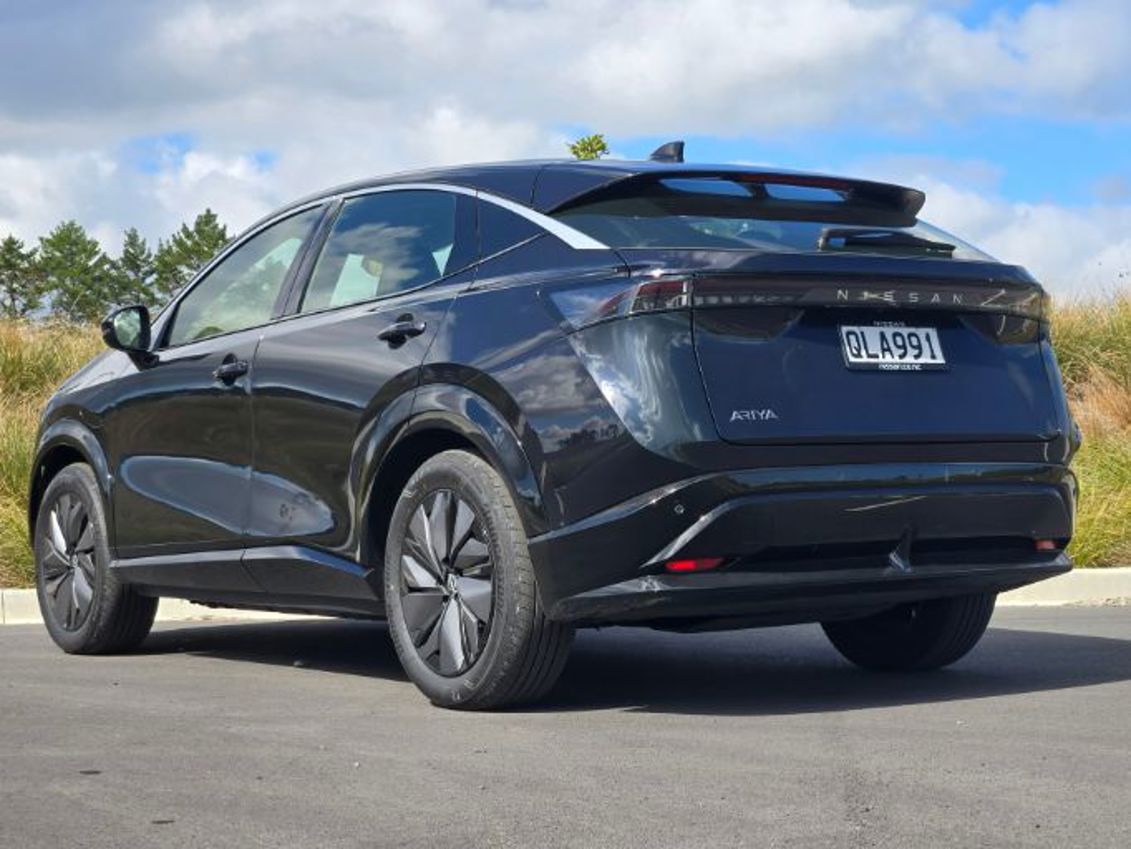
Ariya could sell on styling alone. Even if you don’t like the look (and you might not, it’s polarising), you cannot argue Nissan has executed a particular design theme with scrupulous attention to detail, inside and out.
You see new things every time you look at the exterior, especially in our car’s Aurora Green: it looks black in low light, but can turn green or reddish-purple.
The company argues Ariya embraces uniquely Japanese themes and uses words like “iki” (cutting-edge but simple), “sei” (clever treatment of details), “utsuroi” (fluidity) and “ma” (respecting open space) to describe the car, which can seem a bit pretentious… but everywhere you look there are clean lines and clever touches. And Japanese words are cool words.

You see new things every time you look at the exterior, especially in our car’s stunning Aurora Green colour: it looks black in low light, but turns green or reddish-purple (hence the name) in the sun depending on the angle.
There are very few luxury-car cabins that equal this blend of elegance and attention to detail… and this is a mainstream family SUV, remember.
The faux-grille has a subtle kumiko pattern behind the shiny stuff; it’s supposed to look like intricate Japanese woodworking. That effect is repeated in illuminated sections in the cabin: footwell and doors. The lighting down low is supposed to remind you of a Japanese paper lantern. Yep, Nissan really ran with this stuff on Ariya.
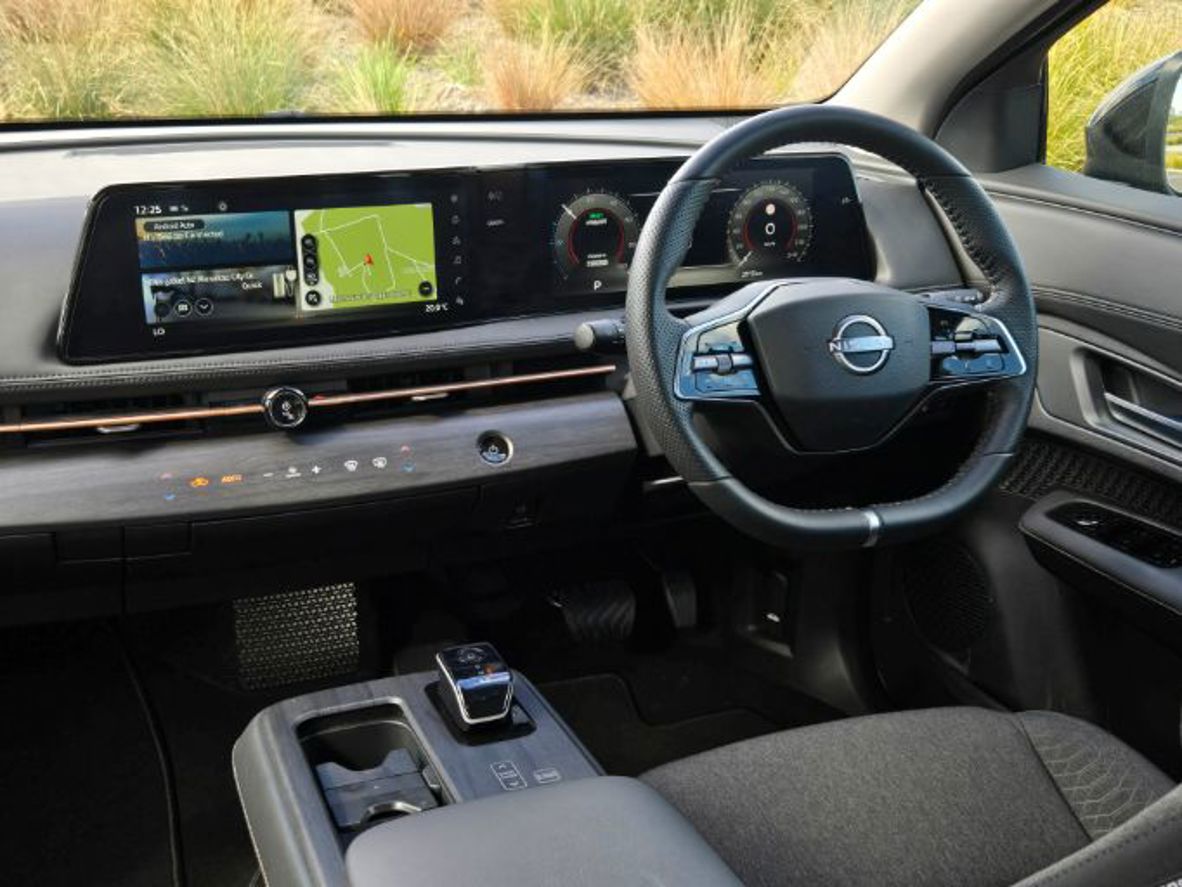
There’s woodgrain on the dashboard and console, but it steps into the realm of high-tech by having backlit touch-controls embedded. They look very elegant; it’s just a shame they’re a bit clumsy to operate, because it’s hard to find the right level of pressure and while you can also physically click them, it requires a fairly hard press.
The ventilation outlets have a decorative copper line running through them; they’re hinged at the front, so that when you adjust the angle of individual sections, the line stays unbroken. It’s the little things.
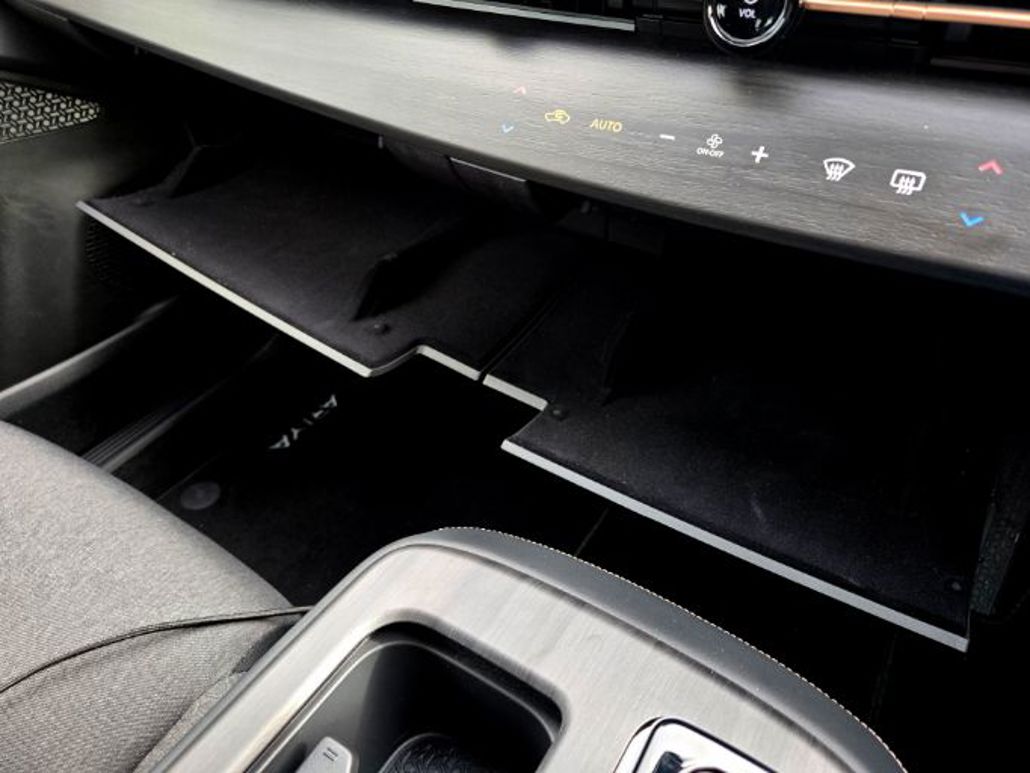
The posh stuff is not at the expense of practicality: check out the dual gloveboxes hidden out of sight, underneath the dashboard. Or the generous console box between the front seat.
There are very few luxury-car cabins that equal this blend of elegance and attention to detail… and this is a mainstream family SUV, remember.
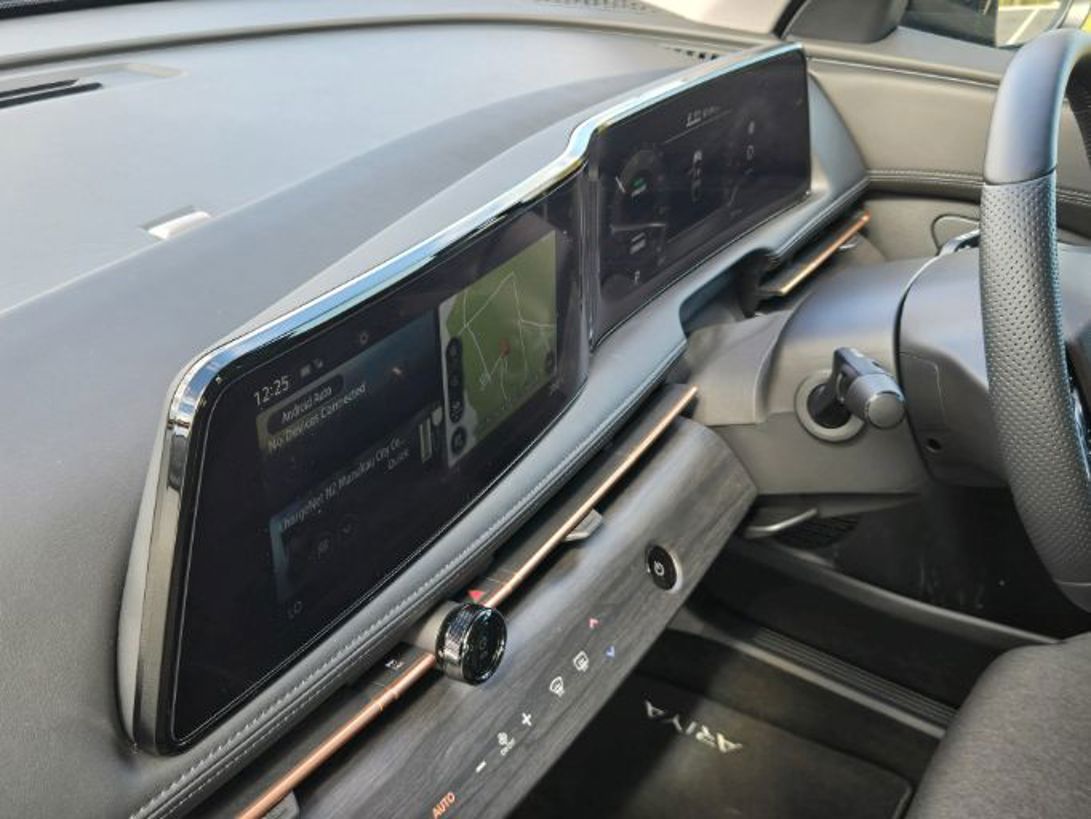
In the midst of this design excellence, the graphics and layout of Nissan’s infotainment system is simply terrible, like something from a decade ago. The reversing camera is a bit rubbish-looking, too. The only solution is plug into phone projection and let Apple or Android take over the screen.
Fast it ain’t (0-100km/h 7.5sec), but the electric motor is carefully calibrated for a smooth takeoff and the Ariya is unbelievably quiet at motorway cruising speeds. Its Bridgestone Alenza tyres are known for their quietness on different surfaces, but the whole car is deeply impressive for its refinement. It’s like a sensory deprivation chamber… and we mean that in a good way.
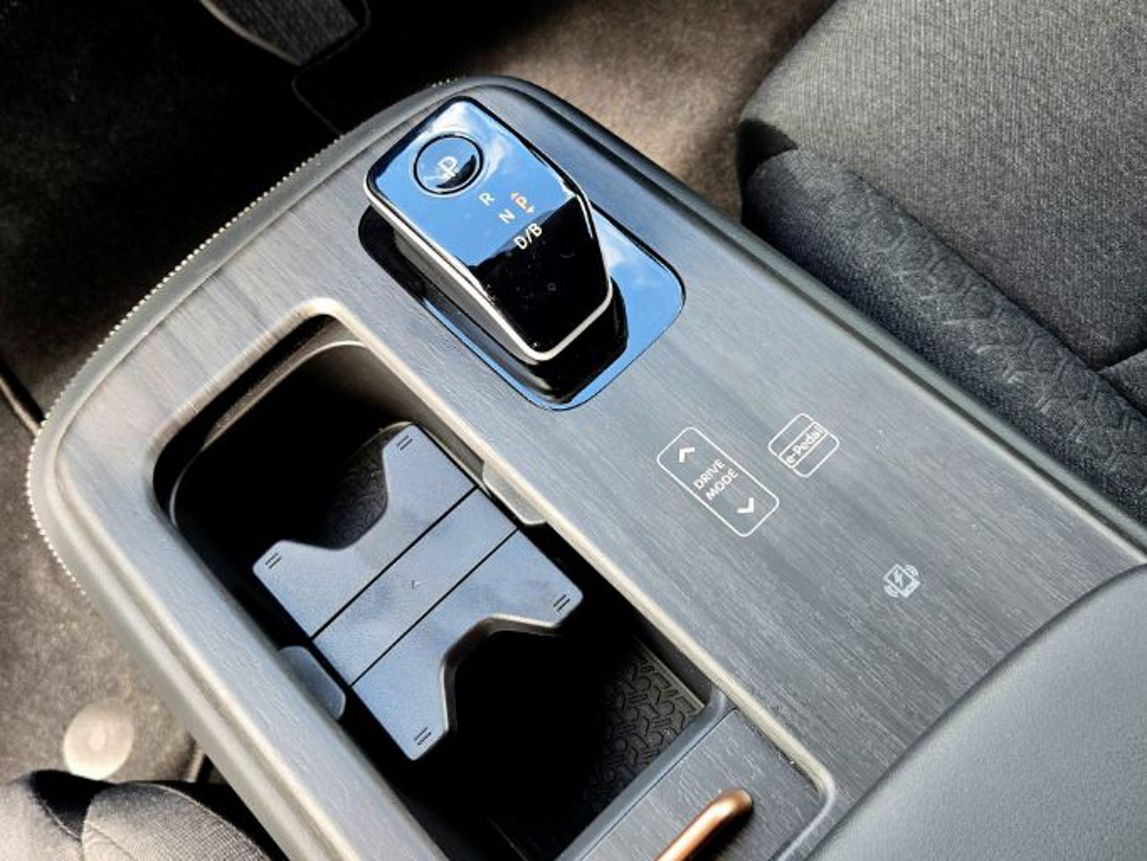
Ariya is even quite composed in the corners, with good steering and well-controlled suspension, although there’s very little in the car’s dynamic character that would encourage you to drive quickly along a winding road. We’re not even sure it has a dynamic character… but we’re also pretty sure that’s what Nissan was going for.
The FWD models have a modest 63kWh battery, so it’s probably not a car for a big tour; WLTP range is 398km, so you’re looking at 300-350km real-world depending on what kind of driving you’re doing. Our car was only showing 300km on a full charge when we picked it up, but over 10 days of varied running it improved and climbed up towards an indicated 400km.
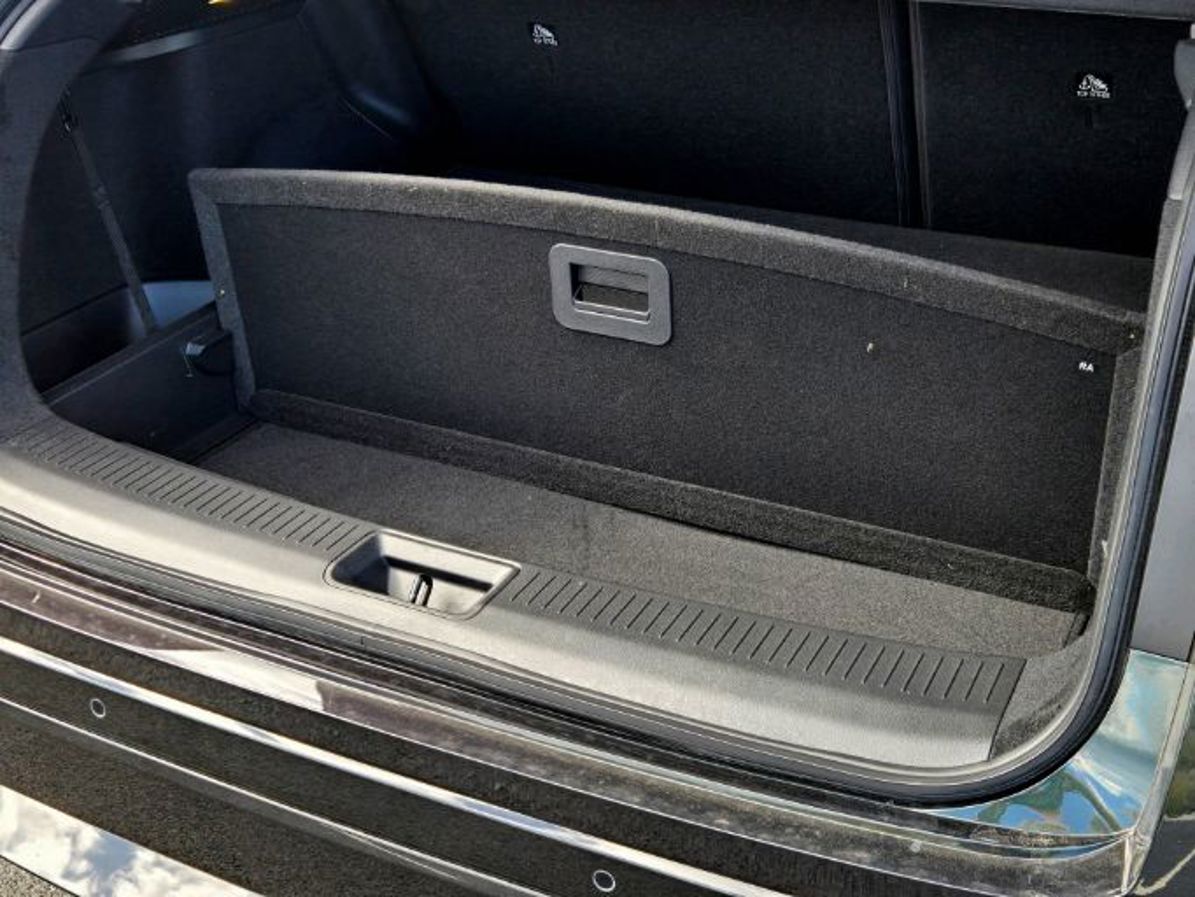
Engage is pretty well-equipped, despite its entry status. You don’t get the leather upholstery of the Advance, but we rather like the grey fabric seats; they suit the minimalist vibe. It gets the full suite of safety features save the 360-degree camera; the driver-assists are really well-calibrated in Ariya too, by which we mean not annoying.
The biggest omissions are power assistance for the seats and tailgate. But you can forgive that while this model is still at its “launch pricing” of $59,990, a handy saving over the full retail of $76,990 (not that it has been listed at that by Nissan NZ… yet).
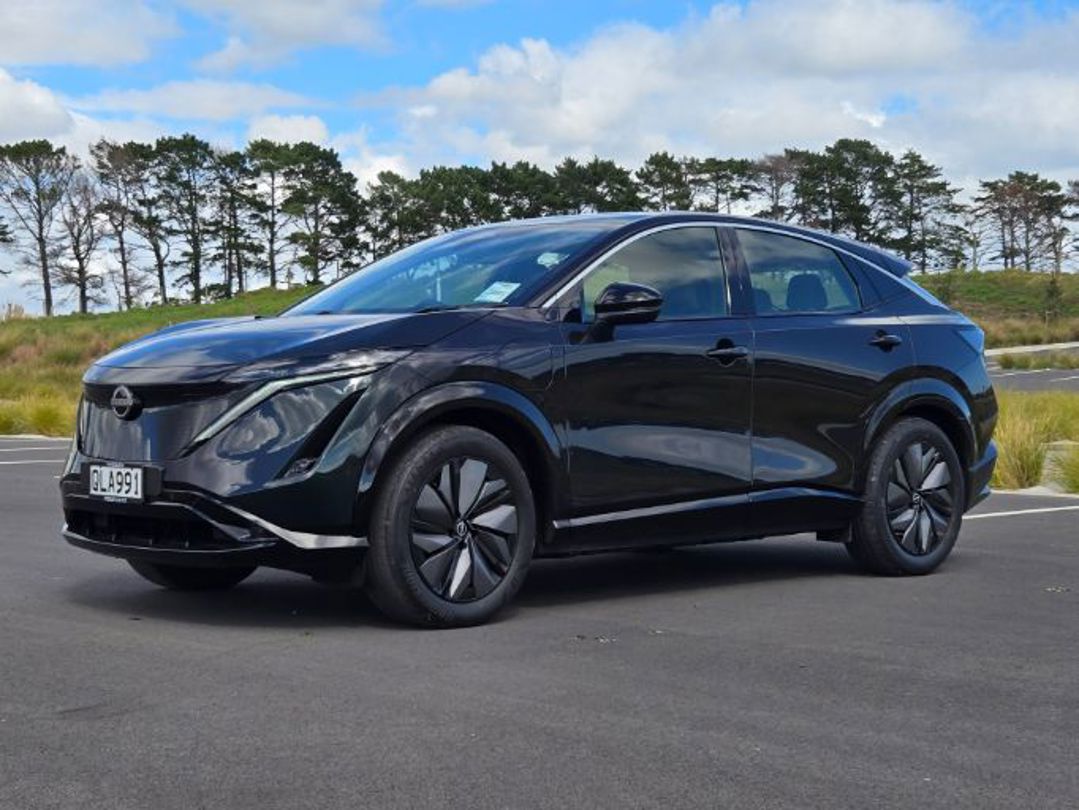
Ariya is more like a mobility pod than an actual car to drive and enjoy in a conventional sense. And we have the feeling that’s exactly the intention.
How much is the Nissan Ariya Engage?
Engage is the entry point to the Ariya range. It was launched at a special introductory price of $59,990 at the end of 2024 and that still stands. When the full retail kicks in (Nissan NZ says it has no particular timeline or sales volume for that to happen) it'll be $76,990.
What are the key statistics for the Nissan Ariya Engage?
All front-drive Ariya models have a 64kWh battery and 160kW/300Nm electric motor, with a single-speed transmission.
Is the Nissan Ariya Engage efficient?
The range claim of 398km is pretty impressive for a relatively small battery by class standards. It helps that the Ariya is car that encourages relaxed driving.
Is the Nissan Ariya Engage good to drive?
See above. It's ultra-refined and really rewards smooth driving. However, it's also quite capable if you're feeling frisky, with good steering and well-controlled suspension.
Is the Nissan Ariya Engage practical?
The minimalist cabin makes it feel like a nice way to travel; the cabin is relatively spacious, enhanced by a flat floor (as is the case with most EVs). However, the rear seat, while roomy, is a little bit knees-up and the 466-litre boot is average by class standards; love the double-floor with pop-up partition, though.
What do we like about the Nissan Ariya Engage?
High style consistently executed, extreme refinement, well-calibrated safety assists, sense of wellbeing in the cabin.
What don’t we like about the Nissan Ariya Engage?
Terrible infotainment graphics, Android Auto needs a cable, grainy reversing camera, entry Engage is missing power seat adjustment and power tailgate.
What kind of person would the Nissan Ariya Engage suit?
Somebody who wants a family EV-SUV that looks and feels a bit futuristic - more mobility pod than an actual car.



